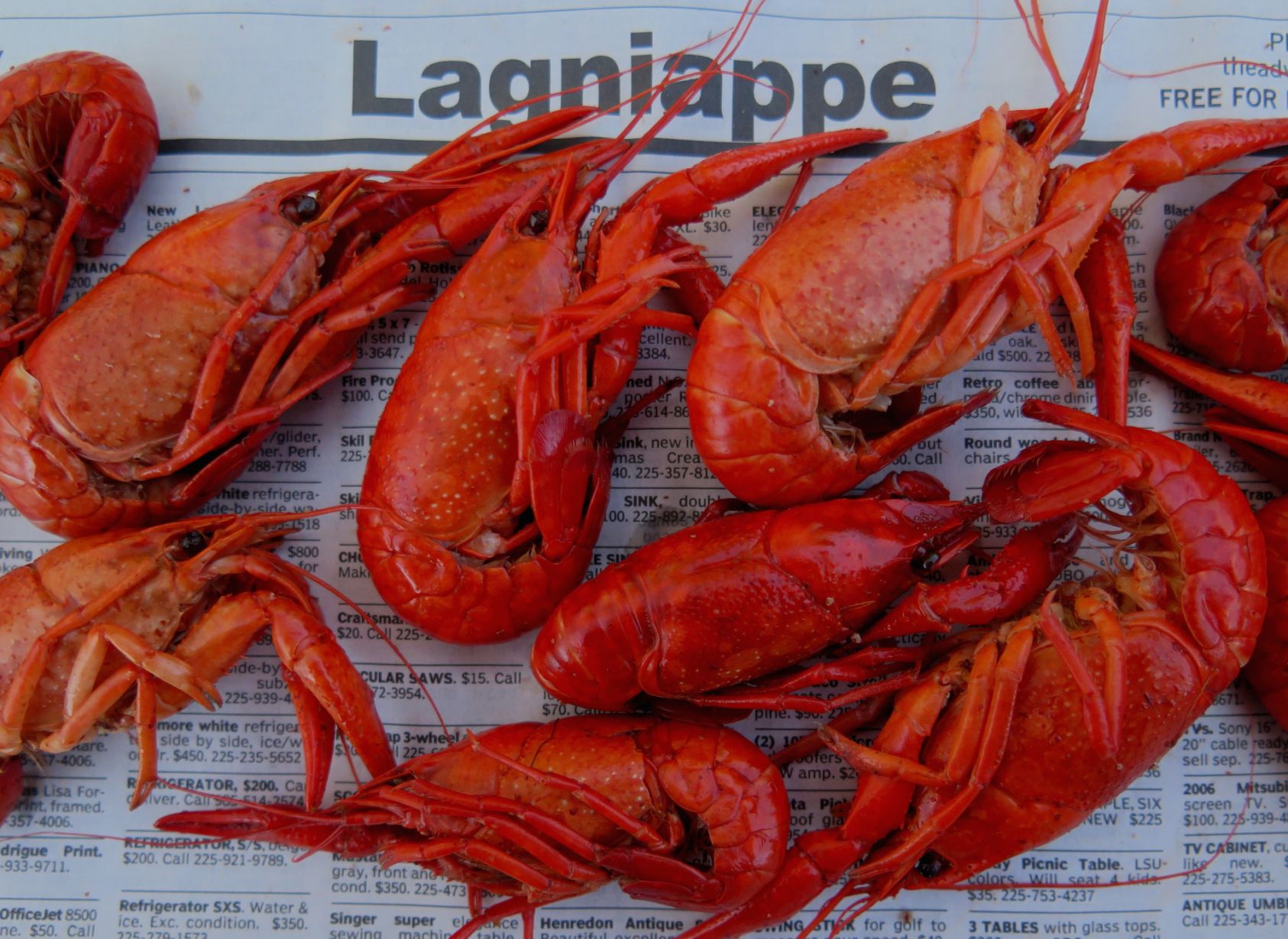Unsung local hero deserves due
May 5, 2015
Meet Sumar Leslie: A Q&A with the local professional athlete
May 5, 2015Ever wonder how they set the opening date for our spring inshore brown shrimp season? If so . . . read on.
Louisiana’s shrimp fishery consists primarily of two species: the brown shrimp (Farfantepenaeus aztecus) [figure-1.png] and the white shrimp (Litopenaeus setiferus) [figure-2]. The shrimp fishery is Louisiana’s most valuable commercial fishery with approximately 5,500 shrimpers licensed to commercially harvest shrimp here. According to the National Marine Fisheries Service (NMFS), in 2012 (the latest year for which complete data are available) nearly 102 million pounds of shrimp were landed in Louisiana with a dockside value of just over $146 million. That makes Louisiana the number one supplier of domestic shrimp in the country.
Louisiana’s shrimp industry started over a century ago with a handful of fishermen using haul seines and cast nets. Trawling began at first with wooden sailboats in the mid-1800s. This led, in the early 1900s, to the use of Model T and Model A engine powered wooden luggers.
By the 1980s, shrimp trawling gear and vessels had become substantially more sophisticated with the use of advanced multi-rig otter trawl designs and butterfly nets aboard vessels ranging from twin-diesel steel-hull “super slabs” to high-powered fiberglass skiffs.
Finally, the 1990s brought us more advancements in trawling effort with various double-rig setups for inside waters and the even more recent development of “skimmer rigs” or, more simply, “skimmers.”
What was once an industry supporting just a few fishermen using relatively simple gear has evolved into a highly competitive commercial and recreational enterprise engaged in by many thousands of people utilizing the latest in sophisticated gear, equipment, and vessels.
As a consequence, the necessity for more rules and regulations governing the management of Louisiana’s shrimp fishery has also evolved into the many and complex shrimp laws found in today’s law books.
In the early ‘60s, recognizing the need for a more flexible spring shrimp season, fishermen and fisheries managers got together and came up with the management criteria that are currently being used to set the spring inshore brown shrimp season.
This measure calls for opening the season when it is predicted that at least 50 percent of the shrimp in inshore waters will reach 100 count per pound. One hundred count shrimp are considered the minimum marketable size.
From the mid-1960s through the 1970s, the Louisiana Department of Wildlife and Fisheries (LDWF) was able to show that brown shrimp growth and survival is directly related to water (hydrologic) conditions found in inshore coastal marsh and water areas (nursery grounds) during the spring months, with April being the most critical month. The most important hydrologic conditions (parameters) are salinity and temperature, with higher salinities and temperatures associated with better shrimp growth and survival.
Biologists continuously take samples at hundreds of locations throughout coastal Louisiana. In addition to monitoring hydrologic conditions of the nursery grounds, biologists watch shrimp growth by sampling the shrimp from the time they enter the estuaries as small 1/2 inch post larvae until shrimp leave the inshore waters as larger, harvestable adults and subadults.
In order to be able to manage shrimp on a regional rather than statewide basis, the Wildlife and Fisheries Commission (WFC) in 1975 divided the state into three shrimp management zones. Accordingly, “Zone 1 extends from the Louisiana/Mississippi state line to the eastern shore of South Pass of the Mississippi River. Zone 2 extends from the eastern shore of South Pass of the Mississippi River to the western shore of Vermilion Bay and Southwest Pass at Marsh Island. Zone 3 extends from the western shore of Vermilion Bay and Southwest Pass at Marsh Island to the Louisiana/Texas state line.”
The WFC is required by law, R.S.56:497A(7), to “. . . fix no less than two open seasons each calendar year for all inside waters by zone, based upon biological and technical data which indicates that marketable shrimp, in sufficient quantities, are available for harvest.”
They are also required to hold a public hearing prior to the opening of a shrimp season, and at that meeting to present biological and technical data concerning the shrimp season, and to set an opening date for the season based primarily upon the data presented. The WFC also takes public testimony from interested citizens relative to the opening of the spring inshore brown shrimp season.
This year’s public shrimp hearing will be conducted at the Wildlife and Fisheries Commission’s meeting to be held at 9:30 AM on Thursday, May 7 at the Wildlife and Fisheries Headquarters Building located at 2000 Quail Drive in Baton Rouge. At that meeting, biologists from the LDWF will present biological and technical information used to predict the percentage of shrimp in inside waters at the 100 count level at certain dates.
This generally leads to opening dates for the spring, inshore, brown shrimp season of sometime in May. The season then normally runs through June and ends sometime in July. Different zones may have different opening/closing dates depending upon the biological and technical data and public input. The fall, inshore, white shrimp season generally runs from August through January.
Last year, the earliest spring, inshore, brown shrimp opening was on May 26 in a portion of Zone 2. The other two zones opened on June 2. As for when this year’s spring inshore brown shrimp season will begin . . . we should know that after the May 7 WFC meeting.
Visit the LDWF website for updated information.
Alan Matherne is the Louisiana Sea Grant / LSU AgCenter Marine Extension Agent.






